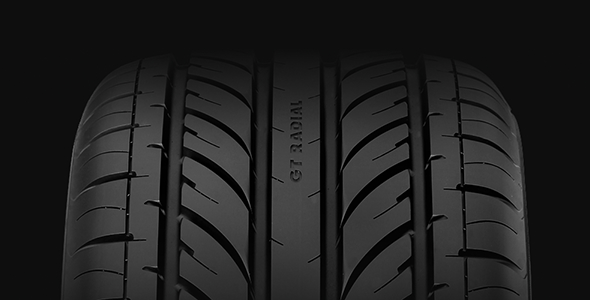
Tire Maintenance
Tires require your care to perform at their best. Learn about tire mounting, rotations, balancing, and much more to keep your tires safe and driving well.
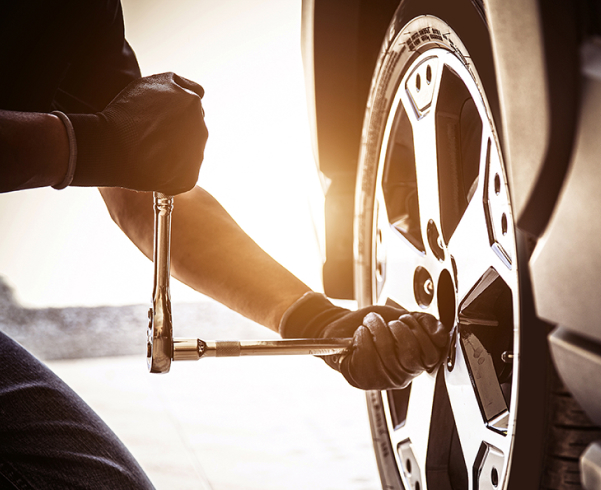

Maintenance Services
Measure and Adjust Tire Pressure

Maintenance Period
2 months or abnormalities
When to replace your tires
Every tire has a Tread Wear Indicator (TWI), which form a triangle located on the sidewall. TWI is an indicator of tire wear and is also a benchmark to you to check if your tire is worn out. Tires should be changed immediately when the tire tread has surpassed the indicators.
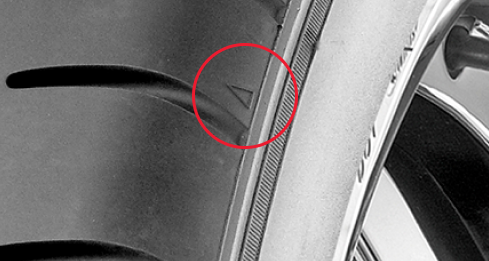
Note: Worn out tires compromises handling and braking distance tremendously.
Do keep lookout for physical signs stated below, even if the tires have not worn out yet.
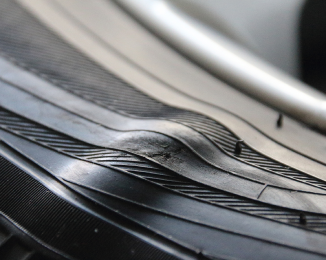
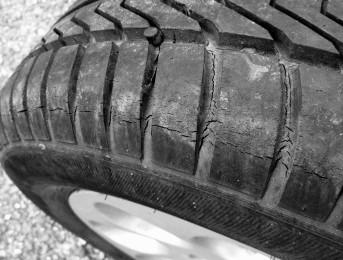

Sidewall Bulges
We recommend you to replace the tires immediately, due to high potential of tires bursting
A sign of potential air leak

Cracks
Normally on the tyre`s sidewall
10 TIPS TO HELP YOU SAVE GAS AND MONEY
Get the most mileage out of each gallon of gas by following these simple fuel saving tips.

When comparing tires that bear the same load, insufficient tire pressure causes high deflection and increases fuel consumption.
Connection between Tire Pressure and Fuel Consumption:
- 10%
- 2%
- 15%
- 20%
- 4.5%
- 28%
- 30%
- 6.25%
- 37%
2 Optimize Octane
Most drivers mistake premium fuel as the best choice for the vehicle. Check the owner’s manual for the correct octane level for your engine. Around 20% of drivers purchase premium fuel, but only less than 5% of cars on the road have engines designed for high octane fuel. If your engine was not, then pumping premium will only cost you more.
3 Save More by Slowing Down
Gas mileage can be improved by 15% just by decreasing your highway speed from 100 kph to 88 kph. Try to maintain a constant speed and gradually increase or decrease speed when needed to achieve better gas mileage. Slow down on highways and use cruise control whenever possible. Avoid drastic accelerations or sudden braking which uses up more fuel.
4 Empty Your Trunk of Junk
A vehicle consumes about 700 liters of gasoline each year. Each additional 45 kg of goods increases fuel consumption by 1 liter. Avoid carrying unnecessary items as extra loads put more strain on the vehicle and leads to higher fuel consumption.
5 Use the Recommended Grade of Motor Oil
Follow the vehicle manufacturer’s recommended grade of motor oil to improve gas mileage by 1-2%. For example, using 10W-30 motor oil in an engine designed to use 5W-30 can lower the gas mileage by 1-2% while using 5W-30 in an engine designed for 5W-20 can lower gas mileage by 1-1.5%. Also, look for “Energy Conserving” on the API performance symbol to make sure it contains friction-reducing additives.
Check your fuel cap to make sure it is secure and not damaged. 556 million liters of gas vaporize annually due to missing or problematic caps.
6 Drive Sensibly
Smooth and Steady Start - Fuel consumption is usually the highest during the initial vehicle startup. Many drivers love to hit the throttle and accelerate to be a step ahead. However, this actually consumes 2-3 times more fuel. From startup to 60 kph, heavy throttle only puts you ahead by 10-20 seconds. 2-3 times the fuel consumption or 10 seconds lead? Make the right choice!
Avoid Braking Abruptly - Fuel consumption is usually the highest during the initial vehicle startup. Many drivers love to hit the throttle and accelerate to be a step ahead. However, this actually consumes 2-3 times more fuel. From startup to 60 kph, heavy throttle only puts you ahead by 10-20 seconds. 2-3 times the fuel consumption or 10 seconds lead? Make the right choice!
7 Plan Before You Drive
Before heading out, you should do your homework to find the best route.
Best Route ≠ Shortest Route
Distance is just a factor in deciding the best route. Congestion (too much traffic lights or intersections) should also be considered otherwise the shortest route may turn into the longest route and use up more fuel.
8 Keep Your Vehicle in Shape
Regular maintenance and tune-ups are one of the best ways to improve fuel economy and vehicle performance. Recommended maintenance schedule can be found in the owner’s manual. Dragging brakes, dirty oil filters, worn spark plugs, low transmission fluid, or transmission going into high gear can all reduce fuel efficiency.
9 Proper Wheel Alignment
For every degree the positive camber is off by, the tire will be dragged sideways 5 m for each km traveled. The driver’s natural reaction is to straighten the driving direction which subjects the tires to additional force and deformation that ultimately increases fuel consumption.
Positive camber is extremely important for wheel alignment!
10 Low Rolling Resistance Tires
Tire rubber not only has flexibility but also viscidity. When tires are rolling, they will be compressed and stretched which consumes energy. Tire rolling resistance occurs when the energy loss is converted into heat and increases the tire temperature.
Choose low rolling resistance tires for better fuel efficiency!
What Is the Appropriate Tire Pressure for My Car?
The recommended tire pressure for each vehicle is set by the car manufacturer and can be found in various areas of the vehicle such as: car owner’s manual, driver’s side door,fuel filler door, and etc.
Vehicle load and tire pressure is interrelated.For larger loads,please increase the tire pressure.

Recommended tire pressure is set by car manufacturer. The tire pressure label can be found on the driver’s seat door.
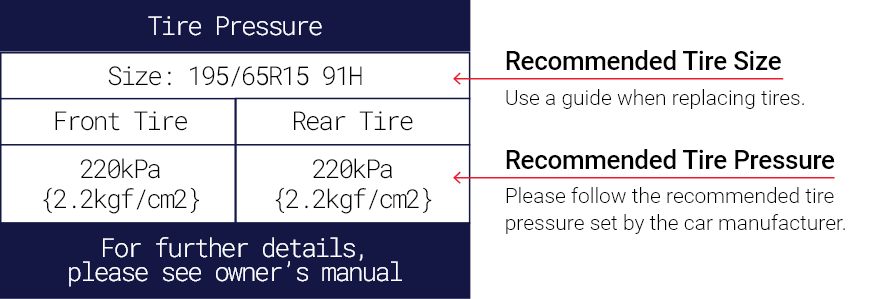
Note: Please check the tire pressure when the tire is cooled to obtain a more accurate measurement. In other words, when the vehicle has been traveling for less than 2 km or parked for at least 3 hours.

Shallow Thread
Bald tires will skid on the road and be damaged by potholes. Groove depth should be at least 1.6 mm otherwise the tires must be replaced.
Tread Problems
Tread Wear Indicator (TWI) is a raised section molded into the grooves of a tire. When the tread is leveled with the TWI, the tires need to be replaced immediately.
Solutions
1. If your car has a spare tire, please replace the damaged tire with the spare tire and take your car to the nearest Giti Professional Service Center.
2. Tread puncture diameter 6 mm or below can be repaired. Tread or sidewall puncture diameter greater than 6 mm and tread wear less than 1.6 mm cannot be repaired and are safety hazards.
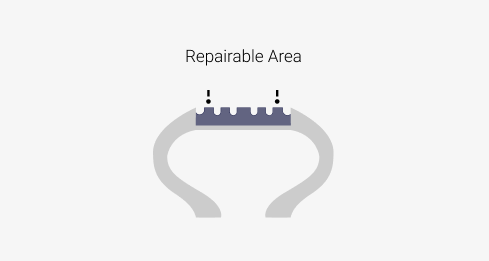
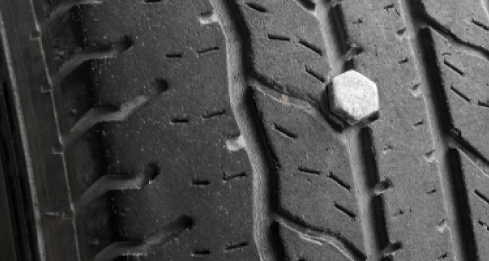
Minor Problem
Check if the tread has been pierced by small stones, glass, metal, or other foreign objects and carefully clean the affected area. If you let these objects get embedded deeper, it may cause serious problems.
Visual Tire Inspection:
Are there cuts or penetration on the tire casing?
Main Reason:
Tread is pierced by sharp objects or nails
Impact on Tire:
Safety hazard
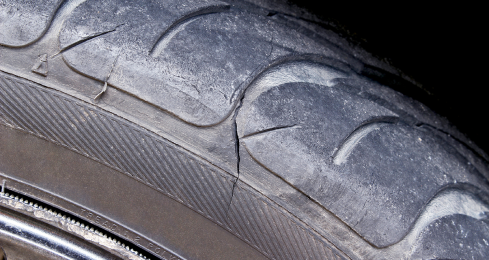
Check Tire Appearance:
Are there bulges on the tire casing?
Main Reason:
On unpaved roads, tires may bounce over deep holes or be impacted by foreign objects which leads to tire and rim deformation, causing a break in the sidewall ply. When combined with internal pressure, the break forms a bulge. Additionally, driving up a curb or parking results in the tire rubbing against objects which cause sidewall bulges.
Impact on Tire:
Safety hazard
Solutions:
1. For your safety, replace tires immediately
2. Tire bulge or air bubbles cannot be repaired
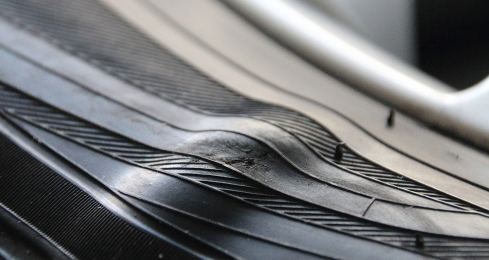
If tire casing is damaged, replace tires.
Slow Air Leak:
Tires will lose a small amount of air pressure every month. If tires need to be inflated every few days, please check the tires, rims, and valve. If necessary, go to a professional service center to repair or replace tires.
Valve Cap:
The valve cap prevents moisture and dust from entering into the tire. Please use them. If you replace tires, make sure to fit a new valve cap.
Using damaged tires is extremely dangerous!
Suspicious Conditions:
Please visit a professional service center for inspection. If tires appear to be damaged, do not use.
Improper Driving Leads to Tire Damage or Excessive Wear:
If vibration or other problems occur when driving and you suspect there is tire or vehicle damage, please slow down, drive carefully, leave the main road, park, and check the tire.
Tire Damage:
If you cannot see the tire damage, please visit a professional service center for inspection.
Tire pressure, including the spare tire, should be checked at least once a month or before driving long distance.
The pressure should be checked after the tire cools down (at least 3 hours after stopping).
Use a tire pressure gauge to check the tire pressure.
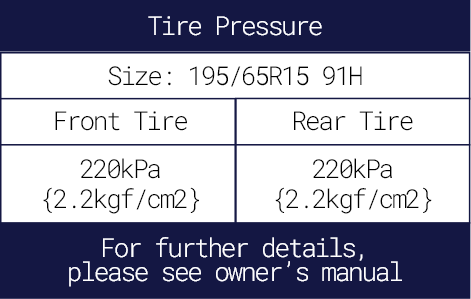
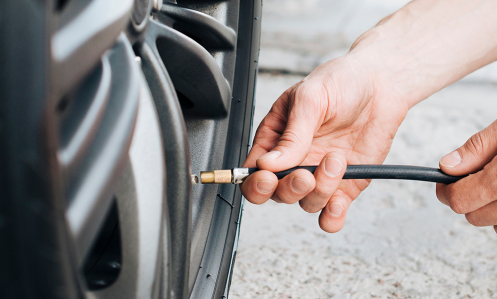
The recommended tire pressure for each vehicle is set by the car manufacturer and can be found in various areas of the vehicle such as: car owner’s manual, driver’s side door, and fuel filler door.
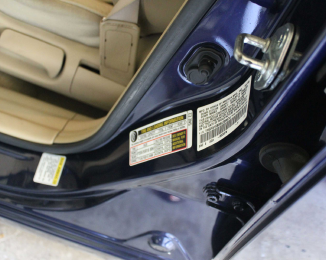
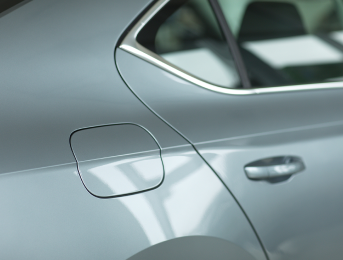
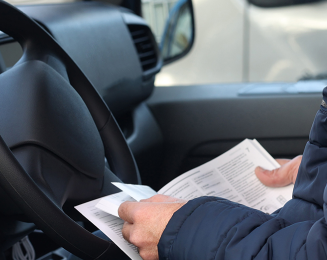



Proper tire pressure helps maintain normal fuel consumption and tire wear, optimizes tire life and performance, and effectively improves safety.
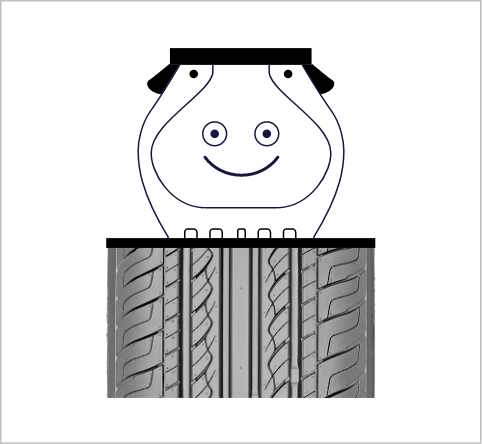
Proper Tire Pressure
Normal wear and tear with extended tire life.
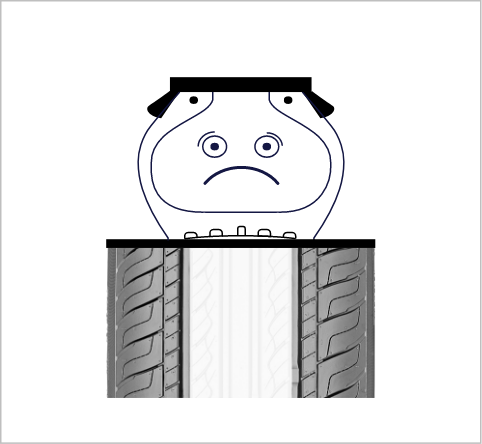
Low Tire Pressure
Causes uneven wear and excessive wear on tire shoulders.
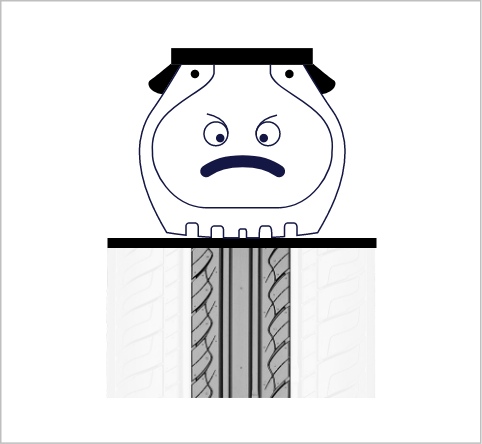
High Tire Pressure
Causes uneven wear and excessive wear in tread center.
What Is the Appropriate Tire Pressure for My Car?
The recommended tire pressure for each vehicle is set by the car manufacturer and can be found in various areas of the vehicle such as: car owner’s manual, driver’s side door,fuel filler door, and etc.
Vehicle load and tire pressure is interrelated.For larger loads,please increase the tire pressure.

Recommended tire pressure is set by car manufacturer. The tire pressure label can be found on the driver’s seat door.

Please check the tyre pressure when the tyre is cooled to obtain a more accurate measurement. In other words, when the vehicle has been traveling for less than 2 km or parked for at least 3 hours.
Never try to mount your own tires. Visit a Giti Professional Service Center when you need to mount tires.
If you attempt to mount tires, you run the risk of seriously injuring yourself as well as damaging the tires and rims.
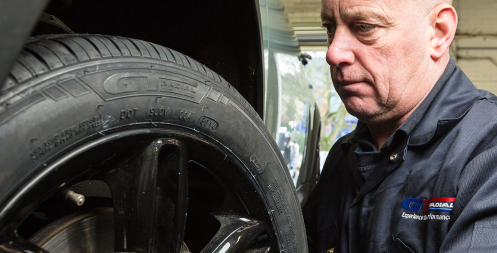
Proper tire rotation on a regular basis will uniformly wear the tire, extend tire life, and improve safety.
After traveling for 8,000-10,000 km, we recommend rotating tires at a service center. When rotating tires please keep in mind “4 Consistency” – same brand, size, pattern, and size because some vehicles have different front and rear specifications.
Tire Rotation Samples:
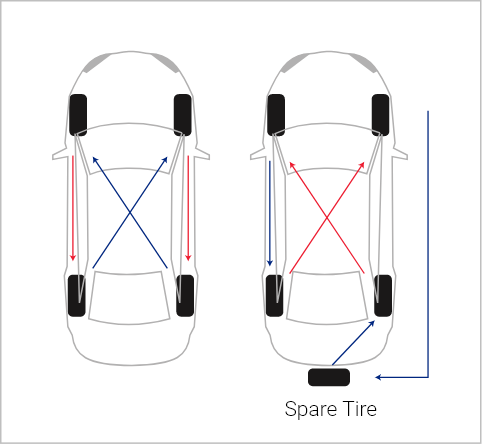
Front-Wheel Drive
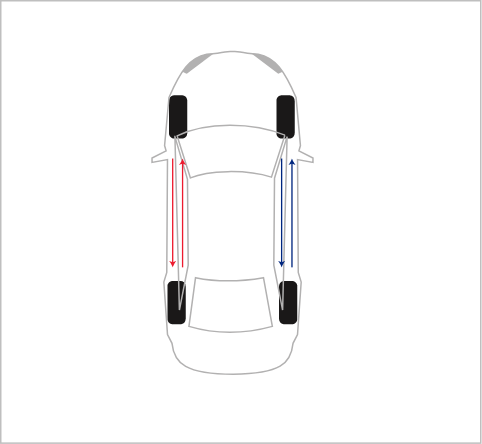
Directional Tire Rotation
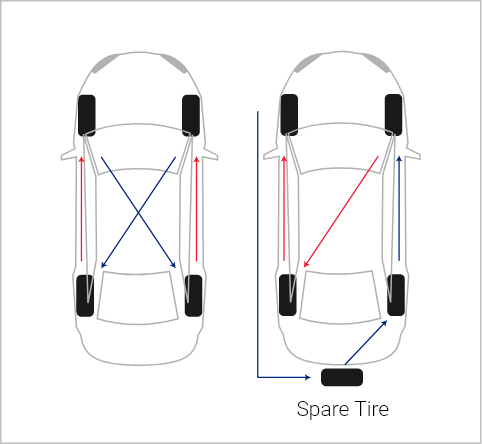
Rear-Wheel or Four-Wheel Drive
Tires will undergo frequency and speed adjustments at different intervals to keep the tire and vehicle rotation running straight and the load bearing direction perpendicular to the ground. Vehicle manufacturers designed different angles to handle a variety of road conditions and enhance vehicle performance. Overtime, these angles will suffer wear which leads to deformation while replacing suspension parts will cause a deviation from the set values, resulting in poor vehicle and tire performance. Therefore, proper wheel alignment can help correct and prevent these problems.
Effects of Improper Wheel Alignment:
- Affects Safety:
Poor high-speed stability and high-speed cornering ability causes displacement of gravity leading to vehicle skids - Increases Component Wear:
Vibration and shakes leads to vehicle component wear while incorrect angles causes rapid irregular tire wear - Poor Handling:
Steering is too heavy or too light - Driving Fatigue:
Vibration and shakes will decrease comfort level while constantly correcting the direction of the steering wheel increases driving fatigue - Increases Fuel Consumption:
Unsmooth driving causes large energy loss
In the Following Situations, Wheel Alignment Needs To Be Corrected:
- Steering wheel is not centered when driving straight
- Vehicle pulls to the left or right when you take hands off of the steering wheel (test on open road)
- Intense irregular wear
- Unstable suspension
- Steering wheel sways from side to side when driving straight
- Vehicle tends to deviate when driving
- Vehicle noise or strange sounds develop
- After replacing suspension component
- Recommend performing regular wheel alignment checks every 10,000 km
- After vehicle collision or impact with the road

When tire and rim assemblies are unbalanced, it will cause wheel shimmy (wheel shakes from side to side) or wheel tramp (wheel hops up and down). Therefore, it is important to achieve static and dynamic balance.
Steps to Balancing:
- Match tire reference dots with rim marks or valve cap
- Use professional balancing equipment to balance tires
- If balancing weight exceeds the limit, reposition the tire and rim by adjusting 180° or 90 °
- If balancing weight still exceeds the limit, check if there is a rim deformation
Benefits of Balancing:
- Prevents tire vibration and tire shimmy
- Does not affect comfort level
- Avoid irregular tire wear
- Avoid irregular vehicle suspension system wear
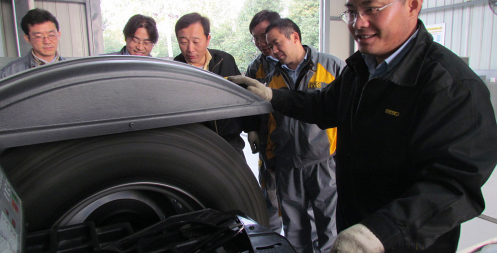
Under normal circumstances, tires can meet the vehicle’s designed mileage but a number of factors impact tire mileage such as: vehicle applications, tire maintenance, road conditions, weather conditions, driving habits, and etc.
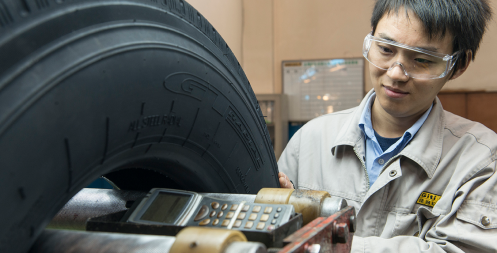
Avoid used tires. You never know what damages the tire suffered. If you use a damaged tire, it may cause accidents.
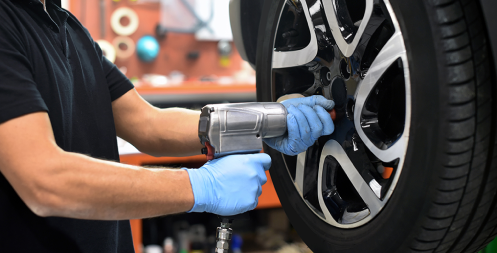
The answer is, Yes.
Tips That Help Increase Tire Life:
- Do not speed. High speeds will generate excessive heat, which increases the rate of tire wear.
- Avoid fast turns on curves and corners. Avoid quick starts and panic stops.
- Do not ride on the edge of the pavement or drive over curbs, potholes, or other obstructions.

Main Causes:
Many factors such as the engine, steering system, suspension system, and tire may cause the vehicle to shake. We recommend you go to a professional service station for inspection.
Impact on Tires:
Causes improper tire wear and affects tire life.
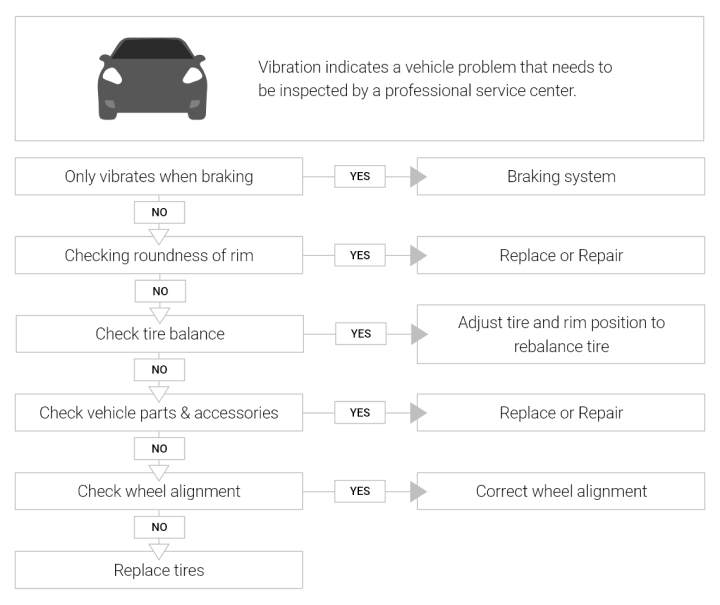
Causes:
Poor braking system, positioning, suspension system, transmission, tires, and etc.
Impact on Tires:
Causes improper tire wear and affects tire life.
Solution:
Visit a professional service center for inspection.
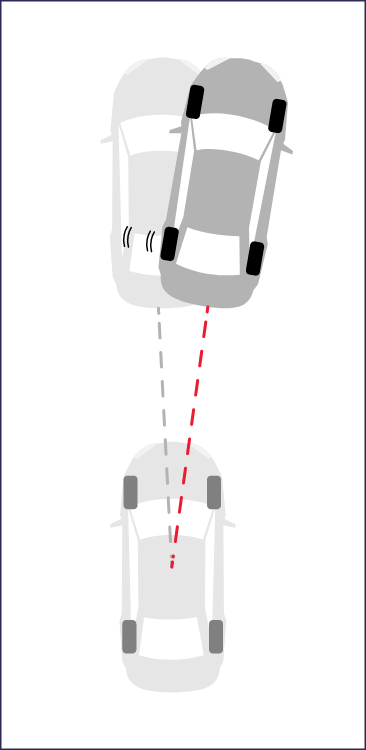
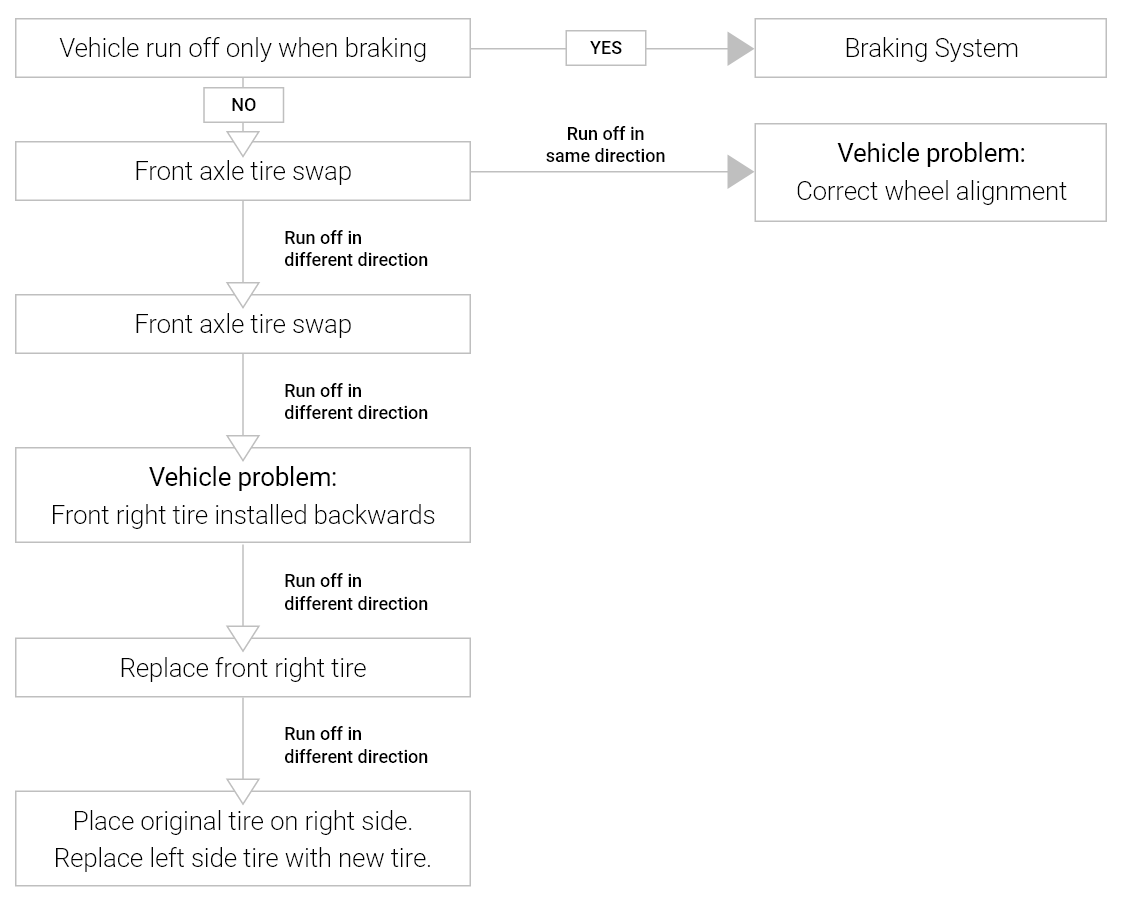
When freeing a vehicle from sand, mud, snow, gravel, ice, snow, or wet surfaces, excessive wheel spin can result in tire failure and cause personal injury or vehicle damage.
Do not exceed 55 km/h, as indicated on the speedometer.

Never stand near or behind a vehicle that is attempting to free itself from a ditch because the tires will be spinning at a high speed.



Hi, how can we help?
Frequently Asked Questions
You can download a product brochures from any of our stores, visit a store near you.
You can locate stores near you, here(not available).
You can also download brochure on each product detail page, sample here.
Locate GT Radial stores near you using our Dealer Locator.
If you are not sure of what size is installed on your vehicle, please confirm first by checking the sidewall.
Here is a simple guide of how to check your tire size.

You can shop tires by size here,
Please contact see Warranty page for warranty information.
Each tire has designated speed rating. Click here to see Speed Rating Guide.
Email Us
You may also email your questions by using our form
Need Assistance?
For All Inquiries, please talk to our Customer Service
+65 6249 5370 Phone Support Hours:
Monday - Friday : 7:00am - 9:00pm CST
If you have questions with the website? Please email our Technical Support
You may visit GT Radial dealers near your location
Find DealersGT Radial Tire Warranty Information
Thank you for trusting in GT Radial. With the proper care and maintenance, we believe that your GT Radial tires will serve you well while you Experience the Performance.
To show you that we trust in our tires as much as (if not more than) you, GT Radial offers the following warranties:
-
AGT Radial 5-Year Limited Time and Limited Mileage Warranty
All our tires come with a 5-year Limited Time and Limited Mileage Warranty, under which your tires are covered against manufacturing faults. Upon falling within the terms of the warranty, your tires will be replaced free of charge.
You may read the full Terms & Conditions here.
